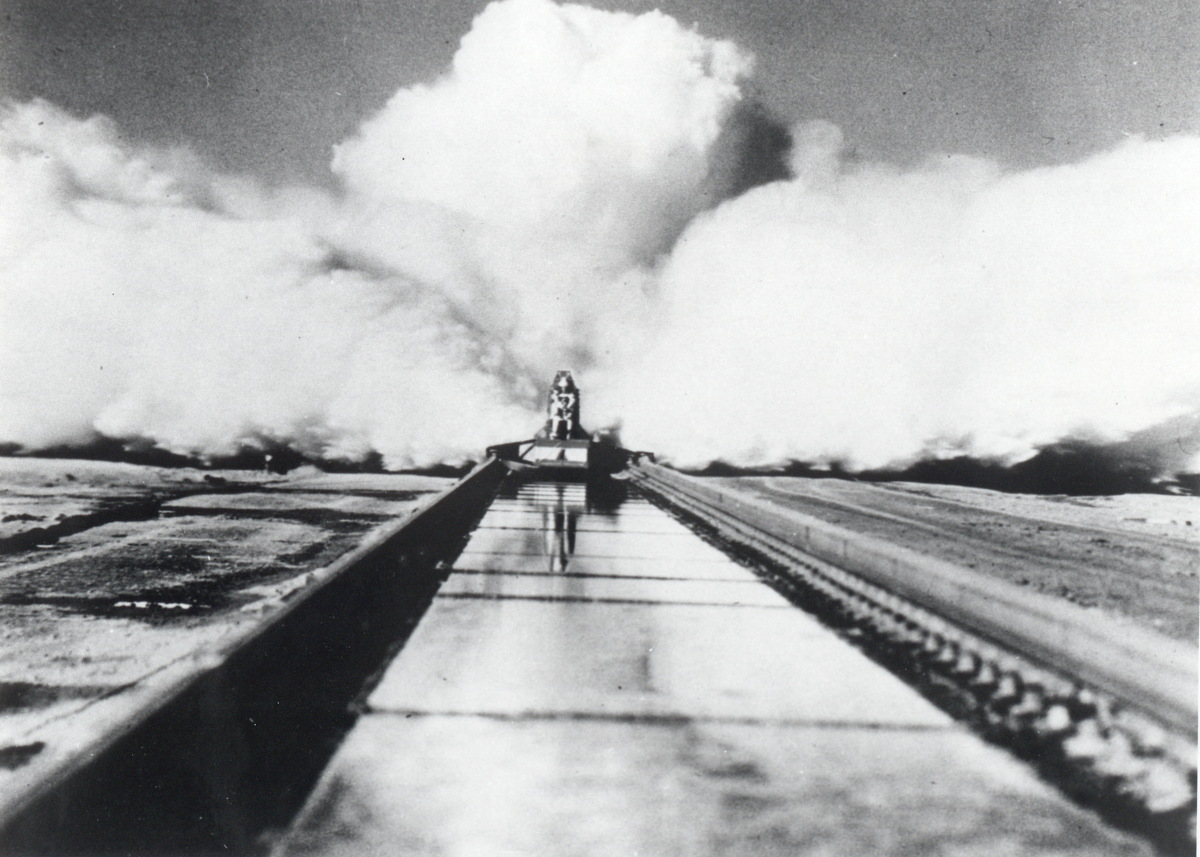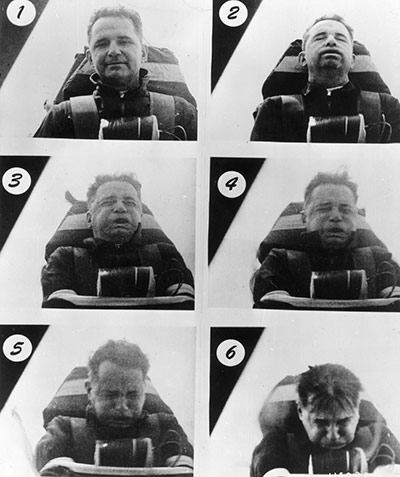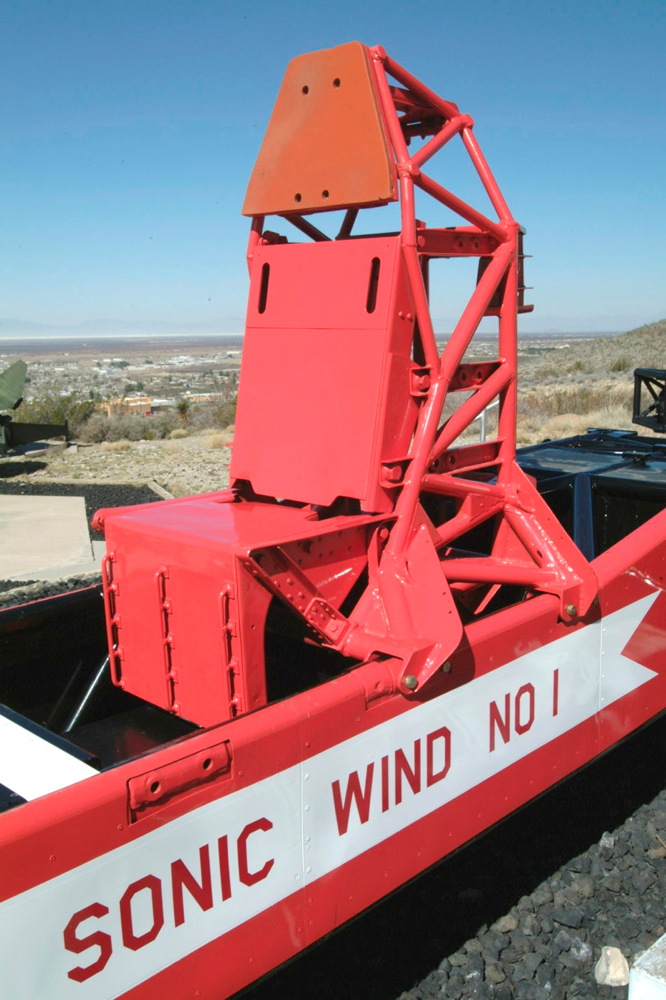How a Rocket Sled Launched 'The Fastest Man Alive'


It has been 60 years since Col. John P. Stapp sailed down a test track, strapped in tight onboard Sonic Wind Rocket Sled 1.
That pioneering ride on Dec. 10, 1954 earned Stapp the title, "The Fastest Man on Earth" – a speedy rocket-powered trip that propelled him to a rate of 632 miles per hour and subjected the test subject to more than 40 Gs given the rocket sled's 1.4 second stop in motion.
The site of his adventure was the Holloman High Speed Test Track in New Mexico, an experiment to ascertain the impact on a pilot ejected at 35,000 feet at twice the speed of sound.
A rocket sled record
Stapp sustained bruises, blisters and temporary blindness in the epic rocket sled test run.
"The effects of that run were relatively negligible, but the data obtained was invaluable," Stapp reportedly once said of the flight, according to the U.S. Air Force.
"Stapp's record-breaking sled run was the final manned-run in a series of windblast and deceleration tests designed to understand human tolerance to high-speed ejections from aircraft," Air Force Research Laboratory historian Kevin Rusnak said in a statement. "Aside from the positive publicity the event garnered for the Air Force, it more importantly brought international recognition to Stapp's mission to improve the safety of Airmen and pilots."
Images of that experiment were publicized around the world. And for aspiring space cadets it was an early, albeit scary, introduction to rocket travel and g-force face time!
Breaking space news, the latest updates on rocket launches, skywatching events and more!
Sled on display
Visitors to the New Mexico Museum of Space History in Alamogordo, New Mexico can view the Sonic Wind Rocket Sled 1.
The sled is on display within The John P. Stapp Air & Space Park, named after International Space Hall of Fame Inductee and aeromedical pioneer.
Stapp retired from the U.S. Air Force in 1970 as a colonel and died at his home in Alamogordo, N.M. in 1999.
Leonard David has been reporting on the space industry for more than five decades. He is former director of research for the National Commission on Space and is co-author of Buzz Aldrin's 2013 book "Mission to Mars – My Vision for Space Exploration," published by National Geographic, with a new updated paperback version to be released next year. Follow us @Spacedotcom, Facebook or Google+. Originally published on Space.com.

Leonard David is an award-winning space journalist who has been reporting on space activities for more than 50 years. Currently writing as Space.com's Space Insider Columnist among his other projects, Leonard has authored numerous books on space exploration, Mars missions and more, with his latest being "Moon Rush: The New Space Race" published in 2019 by National Geographic. He also wrote "Mars: Our Future on the Red Planet" released in 2016 by National Geographic. Leonard has served as a correspondent for SpaceNews, Scientific American and Aerospace America for the AIAA. He has received many awards, including the first Ordway Award for Sustained Excellence in Spaceflight History in 2015 at the AAS Wernher von Braun Memorial Symposium. You can find out Leonard's latest project at his website and on Twitter.


